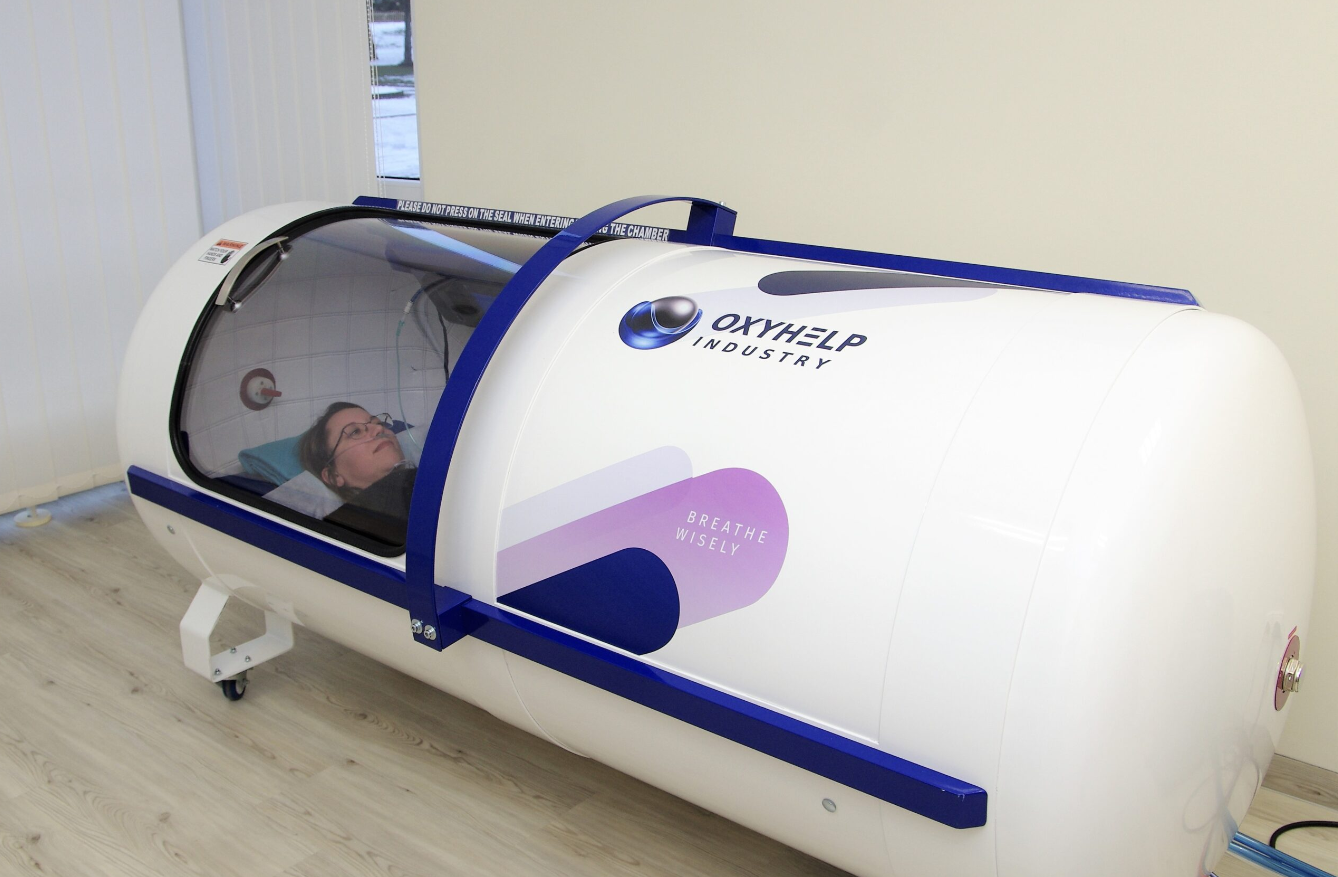
Very few domains in the field of invention have been as active as this one. A journey as transformative as Hyperbaric Oxygen Therapy (HBOT). Utilizing the power of oxygen chambers, this advanced treatment is at the forefront of technological advancement, opening up new possibilities for healing and hope.
HBOT is primarily concerned with the use of oxygen chambers. a technology that has developed throughout time. These chambers are also called oxygen hyperbaric chambers or hyper chambers, provide a setting where patients can breathe oxygen at higher pressures. According to science. A straightforward procedure improves the body’s inherent healing capacity.
The science of hydrogen-based oxygen treatment, or HBOT, is incredibly fascinating. A patient can dissolve some oxygen into their circulation in a hyperbaric chamber due to the increased pressure. Since being saturated with an excess of oxygen, hyperbaric oxygen therapy is one of the therapies that can improve the wound-healing pace within tissues and organs.
The ingenuity of the story behind the evolution of these hyperbaric technologies reveals innovative processes. Discovering and implementing optimal ways of provision of oxygen therapy remain the ultimate objective of modern chamber applications. The early oxygen generators originated as monstrous devices with their large design and complexity, but nowadays, due to improvements in chamber management, control systems, and safety factors, these devices are fine, simple, and preferred devices for therapy.
Numerous case studies and studies shed additional light on the potential and impact of HBOT. An investigation exploring the efficacy of HBOT in improving cognitive abilities in older persons was published in NCBI. This study demonstrates how HBOT can lead to notable gains in cognition, highlighting the therapy’s potential beyond conventional uses for wound healing.
In an alternative publication sourced from NCBI, the role of oxygen treatment is reviewed appreciates the significance of enhancing brain healing. This study lends physical evidence of the restoration of cognitive proficiency after injury with HBOT therapy. It underscores the fact that the patients whose HBOT therapy was successful had positive outcomes in their activities relying on these processes and mechanisms in the brain. This study is not only the futuristic path toward rehabilitation but also an idea that HBOT might also be considered for kind of treatment of other mental disorders.
While it may be a little harder to go into depth outlining just how HBOT tech actually works, the understanding of what makes such medical breakthroughs possible is more and more crucial as we dive deeper into the technological advancement of HBOT. An all-powerful work of literature accessible on the Web site. The Net Center for Biotechnology (NCBI) page explains oxygen therapy’s mechanism and application. This all-encompassing guide outlines the advantages wild oxygen provides to the body, including the improvement of healing of wounds, anti-inflammatory response, and infection avoidance. In addition, it also has a number of illnesses, like acute ischemic illnesses and chronic wounds, which are greatly treated by HBOT. This proofing has the mandate to showcase that there are underlying factors that cause technology to progress in HBOT.
Beyond its conventional uses, oxygen treatment has other applications. These days, HBOT is being used in a variety of fields, each of which utilizes the special benefits of hyperbaric oxygen. For instance, athletes are using HBOT to promote healing and hasten their recovery from injuries in sports medicine.
Because higher oxygen levels can aid in the healing of brain tissue, neurologists are also looking into the possibilities of HBOT in the treatment of disorders including stroke and traumatic brain injuries. Furthermore, in the field of reconstructive surgery, the increased oxygenation brought about by HBOT has demonstrated encouraging benefits in terms of better surgical outcomes and shorter recuperation times.
One significant advancement in the industry is the personalization of HBOT treatment. Modern HBOT chambers are equipped with technology that allows for customized treatments according to the demands of each patient. This customization is made possible by modifying oxygen levels and pressure settings, as well as by utilizing health data to track and modify therapies in real time. Thanks to these technical developments, every HBOT session is guaranteed to be optimized for results that individually address the medical needs of each patient.
HBOT is becoming more and more accessible as oxygen chamber technology advances. This treatment was formerly mostly provided in facilities. But now that user-friendly chambers have been developed, it’s becoming more widespread in a variety of contexts. HBOT is not available in clinics or hospitals. Accessing this therapy is now simpler than ever because to its availability in wellness centres and even residences.
The advantages of HBOT are becoming more widely acknowledged along with this enhanced accessibility. The community’s support, ongoing research, and patient testimonials have all helped to increase awareness of its potential. Demand for these treatments is expected to increase as more individuals become aware of the benefits of HBOT. This growing need will encourage further innovation and progress in this area.
Oxygen treatment has a bright future ahead of it with lots of interesting prospects. As research into HBOT’s many uses and advantages continues, the convergence of technology and healthcare will drive the technology into new fields. We have only just begun to explore the possibilities that chamber technology offers, such as the integration of advanced monitoring systems and reality to enhance patient comfort. As we learn more about HBOT’s potential, it offers patients all over the world new hope and therapeutic options—a prime illustration of how technology can transform medicine.
The trajectory of hyperbaric technology and HBOT is expected to rise as we go towards the future. In this field, research and development ensure improved, effective, and easily accessible hyperbaric solutions. This advancement goes beyond just making the chambers better; it also includes incorporating these technologies into healthcare systems and making them essential parts of treatment plans everywhere.
The development of oxygen therapy (HBOT) from its beginnings to its present status as a cutting-edge medical intervention demonstrates the amazing influence of innovation in healthcare. As we learn more about the potential of HBOT, it represents hope and progress in the industry while offering chances for recovery and rehabilitation. With regard to HBOT, the nexus of technology, medicine, and patient well-being is not just a preview of the future of healthcare; rather, it is a reality that is developing right in front of our eyes.















